NO RESERVE!! 1964 Jaguar Mark X 3.8L Saloon - 35,000 One-Family Miles!! RARE!!!!
- Price:
- Location: Fuquay Varina, North Carolina, United States
- Condition: Used
- Make: Jaguar
- Model: Other
- Type: U/K
- Trim: Base
- Year: 1964
- Mileage: 35,704
- Color: Gray
- Engine size: 3.8L 3781CC 231Cu. In. l6 GAS DOHC Naturally Aspirated
- Number of cylinders: 6
- Fuel: Gasoline
- Transmission: Automatic
- Drive type: U/K
- Interior color: Red
- Vehicle Title: Clear
1964 Jaguar Other Description
You’re about to bid on an original 1964 Jaguar Mark X with 35,704 one-family miles. Yes, this car needs a restoration but it is complete and VERY RARE!!
This is a NO RESERVE auction with a starting bid of one penny!!! Please feel free to contact me at any time with details concerning the car, we welcome any and all prospective bidders to check out the car in person prior to bidding on this rare piece of Jaquar history!
Steve Ashworth
Steve Ashworth Performance
(919) 272-7012 - Cell
(919) 552-9615 - Shop
Fuquay Varina, NC 27526
Jaguar Mark X (Wikipedia)
The Jaguar Mark X (Mark ten) was the top-of-the-range saloon car built by the British manufacturer Jaguar, primarily aimed at the United States market. The Mark X succeeded the Mark IX as the company's largest saloon model.
The unitary construction body-shell was codenamed "Zenith" during development and this floor pan continued in production long after Mark X production ended, as the DS 420 Limousine. The new style, four headlamps set into rounded front fenders with a vaned grill, first appeared on the Mark X. The interior was the last Jaguar with abundant standard woodwork, including the dashboard, escutcheons, window trim, a pair of large book matched fold out rear picnic tables, and a front seat pull-out picnic table stowed beneath the instrument cluster. Later, air conditioning and a sound-proof glass division between the front and rear seats were added as options.[3]
From its introduction until the arrival in 1992 of the low-slung XJ220, the Mark X stood as one of the widest production Jaguars ever built. Asked in 1972 if he thought the Mark X had grown rather too large, Jaguar chairman William Lyons, agreed that it "definitely" had: he opined that the then recently introduced and notably more compact Jaguar XJ6 was, by contrast an "ideal size".
The substantial doors required helical torsion springs inside the door pillars to enable them to be opened from the inside with an acceptably low level of effort.
Mechanical
The Mark X was the first Jaguar saloon to feature independent rear suspension. It differed from earlier large Jaguar saloons in having 14" wheels instead of the more common 15". It used a wider-track version of Jaguar's IRS unit first seen on the E Type, which was subsequently used on Jaguar vehicles until XJ-S production ended in 1996. The front suspension used double wishbones with coil springs and telescopic dampers. The car initially featured a 3781cc version of Jaguar's XK in-line six-cylinder engine. A 9:1 compression ratio was standard, but an alternative 8:1 compression ratio was available as an option. For the London Motor Show in October 1964 the enlarged 4,235cc unit took over, although the 3.8-litre unit could still be specified until October 1965. Triple SU carburetors were fitted, fed from an AC Delco air filter mounted ahead of the right hand front wheel.
Transmission options were manual, manual with overdrive, automatic, or automatic with overdrive. The arrival of the 4.2-litre power unit coincided with the introduction of a newly developed all-synchromesh four-speed gear box, replacing the venerable box inherited by the 3.8-litre Mark X from the Mark IX, which had featured synchromesh only on the top three ratios.[3] Many domestic market cars and almost all cars destined for the important North American markets left the factory with a Borg Warner automatic gear-box. The 4.2-litre engine's introduction was also marked by a transmission upgrade for buyers of the automatic cars, who saw the Borg Warner transmission system switched from a DG to a Typ-8 unit. The power train was completed by a Thornton Powr-Lok limited-slip differential.
Stopping power for this heavy car came from power-assisted disc-brakes on all four wheels.
Power-assisted steering was standard, the later 4.2 cars receiving Marles Varamatic Bendix (Adwest) variable ratio steering boxes, designed by an Australian, Arthur Bishop.
 1964 Jaguar Mark X Saloon
1964 Jaguar Mark X Saloon
Mileage: 58,813
 1964 Jaguar Mark X Saloon Stunning Black over Red
1964 Jaguar Mark X Saloon Stunning Black over Red
Mileage: 53813
 1964 Jaguar MK2, Manual, Overdrive, 3.8, RHD, Mark 2, Saloon, MKII
1964 Jaguar MK2, Manual, Overdrive, 3.8, RHD, Mark 2, Saloon, MKII
Mileage: 104,000
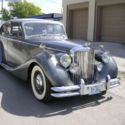 1951 Jaguar Mark 5 Saloon 4 Door, Rare
1951 Jaguar Mark 5 Saloon 4 Door, Rare
Mileage: 24,098
 66 Jaguar Mark X 420G 4.2 10 Rare Jag 420 Big Body Saloon 6 Video ~ Magazine Car
66 Jaguar Mark X 420G 4.2 10 Rare Jag 420 Big Body Saloon 6 Video ~ Magazine Car
Mileage: 16,861
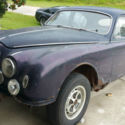 1959 JAGUAR MARK 1 SALOON BARN FIND!!! NO RESERVE!!!!!
1959 JAGUAR MARK 1 SALOON BARN FIND!!! NO RESERVE!!!!!
Mileage: 9,999,999
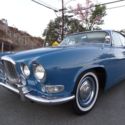 66 Jaguar Mark X 420G 4.2 10 Sedan Rare Jag 420 Big Body Saloon Straight 6 Video
66 Jaguar Mark X 420G 4.2 10 Sedan Rare Jag 420 Big Body Saloon Straight 6 Video
Mileage: 16,861
 1961 Jaguar Mark 2 3.8L Saloon, Rare four-speed, Restored Original Interior
1961 Jaguar Mark 2 3.8L Saloon, Rare four-speed, Restored Original Interior
Mileage: 66,204
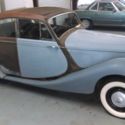 NO RESERVE 1949 JAGUAR BARN FIND SURVIVOR MARK 5 1949 JAGUAR SALOON 48 50 51 52
NO RESERVE 1949 JAGUAR BARN FIND SURVIVOR MARK 5 1949 JAGUAR SALOON 48 50 51 52
Mileage: 60,967




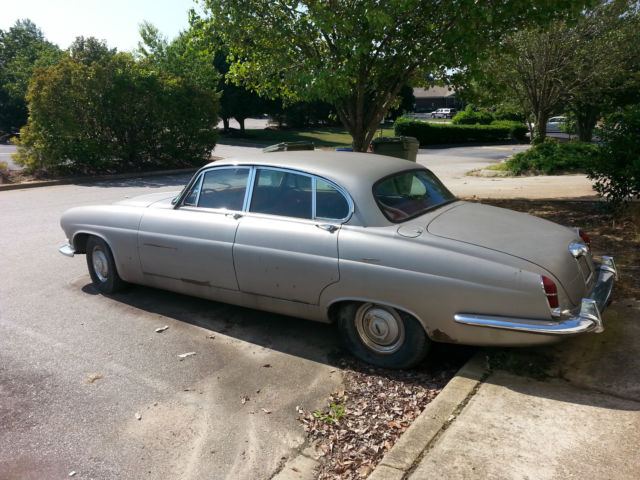








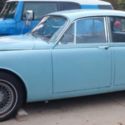 1962 Jaguar Mark II 3.8 Saloon 4 Speed Manual w / Overdrive Rare No Reserve
1962 Jaguar Mark II 3.8 Saloon 4 Speed Manual w / Overdrive Rare No Reserve